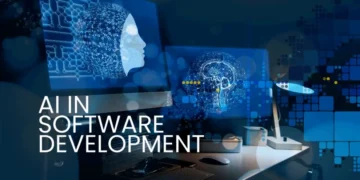By establishing collaborative networks of specialised agents, multi-agent testing is revolutionising the way testers approach and resolve challenging issues. These methods are more effective than single-agent methods since they work together, specialise in various tasks, and exhibit emergent behaviours, but they are also more difficult to test.
Standard guidelines for agent to agent testing become crucial when teams implement AI in such tests. Single-agent testing techniques fall short in complex applications, which require intelligent testing systems compatible with their architectural complexity. By deploying specialised AI agents that work together, plan, and communicate to offer thorough validation across each application layer and integration points simultaneously, multi-agent testing systems tackle this issue.
In this article, we will provide an overview of Multi-agent testing along with its advantages. We will cover the working principle of these multi-agent explore how to test AI agents that communicate with each other.
Understanding Multi-Agent Testing
In multi-agent testing, systems with several autonomous AI agents working together to solve problems get evaluated with an emphasis on unexpected behaviours, integration challenges, and their general dependability. By implementing several intelligent agents that collaborate to automate testing processes, multi-agent testing improves software development. It takes a multifaceted strategy that incorporates real-world user feedback as well as simulated testing with other agents.
Advanced AI agents, individually in charge of a particular element of test automation, serve as an organised agentic AI system. Functional demands can be analysed from documentation using a multi-agent system designed for automated software testing. They automate collecting data, validation, and modification by transforming objectives into organised test cases, such as Gherkin BDD formats. They guarantee that test scripts continue to work even when the user interface is frequently changed by identifying, categorising, and tracking UI elements across test scripts.
Multi-agent testing adapts and enhances validation mechanisms by learning from past data and incorporating validation checks and optimisations into test scripts. Through collaboration, intelligent testing ecosystems are developed that maintain specialisation in each testing domain while adapting to the complexity of the application.
How Do Multi-Agent Systems Work with Each Other
Understanding the workings of multi-agent systems is essential to consider their full potential. These systems generally function similarly, independently to achieve their various objectives. Let us analyze each of them in more depth.
- Agents– Agents have a wide range of roles, duties, actions, and models of knowledge. Each agent functions as an independent entity with the ability to decide and carry out actions while keeping the objective and the information gathered in mind. The best thing about these agents is that, despite having a common purpose, they operate autonomously.
- Environment– The environment is where agents are positioned, assess the situation, and behave appropriately. It could be a virtual platform, like a digital platform, or a real location. Everything an agent interacts with, including obstacles, resources, and outside information, is referred to as the environment. Agents can recognize all of the potential and limitations in a clear-cut environment.
- Interactions– The essential link that keeps the systems together is interaction. They describe how agents engage with the environment and one another. The behavior of the system is greatly influenced by this interaction, which can take the form of competition or agents communicating and cooperating to accomplish a predetermined goal. This is the responsibility of an effective communication structure to transform individual agents into an integrated system. Through the structured protocols, agents coordinate their actions, negotiate, and exchange information and updates. It shows that each agent is aware of their responsibilities and the specific goals of the system.
Advantages of Multi-Agent Testing
Testers gain more than simply automation when they use a multi-agent system. They acquire an infrastructure that adapts to changes in real time, learns, and scales. These systems enhance decision-making, task management, and operational risk response.
Modularity and Scalability
Multi-agent testing expands in response to organisational demands. Agents can be added or removed by testers without affecting the system in general. The other agents keep working even if one needs updates. This lets testers react swiftly to changes in requirements and reduces system outages.
Without completely redesigning the system, testers can add agents to manage compliance and numerous tasks and scale operations with little setup. Every agent concentrates on a particular task, making sure that operations are optimised, and improves their own agents without interfering with the work of other agents:
Running Tasks in Parallel
Testers do not have to wait for one task to be completed before beginning another when several agents work together. Parallel task execution increases productivity and speed, allowing tasks to be finished more quickly and without bottlenecks. Testers can easily manage massive data quantities, even as the data grows. Additionally, by enabling Agents to manage multiple tasks concurrently, it frees up the team to engage in repetitive tasks like analytical or decision-making.
Extensive Test Coverage
Multi-agents can effectively test complicated interconnected architectures by collaborating and sharing information. This helps in covering a greater range of contexts as well as integration points that a single, traditional testing solution may overlook.
Robustness and Fault Tolerance
Even when certain parts of Multi-Agents fail, the system continues to function. By allocating accountability among agents, testers can prevent complete system crashes and guarantee system continuity in the event of a malfunction. Other agents continue to work even if one ceases. The reporting agent continues to function even if the compliance agent fails. Not all functions are lost. Testers can fix minor errors without interfering with regular activities. The system functions together and makes sure not to stop the entire process if one component fails.
Making Decisions in Real Time
Decisions are made instantly while live data is passing through several agents. This reduces delays and enhances oversight of time-sensitive activities. To detect issues in real time, it responds promptly to important incidents. By enabling agents to interact with changes in real time and obtain precise information instantly, they increase transparency and command. This allows testers to take prompt action on critical issues.
How to Test AI Agents Communicating with Each Other
Define Clear Objectives and Metrics
Before testing, establish the system’s goal and success criteria using the SMART (Specific, Measurable, Attainable, Relevant, Time-bound) criteria. The task success rate is a key evaluation indicator that measures how correctly agents fulfil their shared and individual objectives. Communication efficiency is used to assess the speed and effectiveness of information flow among actors. An error propagation study will determine where errors originate and how they spread throughout the agent network.
Establish the rules for communication.
AI agents use communication to plan their actions, exchange data, and collaborate efficiently to accomplish a common objective. One communication method is the transmission of data, in which agents send and receive instructions containing commands or data by requesting information from one another’s APIs. Data structures that are shared, including having access to a memory cache or other shared data source.
To prevent overlapping tasks and to take necessary steps if an agent does not respond within a specified time, clear guidelines for inter-agent interaction should be developed. Test inter-agent interactions regularly to ensure they remain compatible as the system evolves.
Take multi-agent coordination into practice.
Coordination guarantees that AI agents work together, stay away from difficulties, and make effective use of their resources. Key methods of coordination include centralised coordination, in which a single central agent supervises all other agents’ activities. When agents work together as needed without a central authority, this is known as decentralised coordination. A central agent supervises high-level activities in hybrid coordination, while other agents independently manage their own subtasks.
Perform Unit testing on individual agents.
Test each agent in isolation to ensure that its internal logic and specialised functions are correct, regardless of other dependencies (e.g., other agents or external APIs). Mocking allows testers to simulate the inputs and outputs of other system components.
Collaboration between integration testing agents.
Concentrate on the interactions and data transfers between agents. This guarantees that they follow defined communication standards and that the whole workflow runs as planned. Simulate various collaboration patterns (e.g., hierarchical, sequential) and see how agents handle errors or unexpected inputs from their peers.
Scenario-Based End-to-End (E2E) Testing
Analyze the system’s overall performance on multi-step, realistic tasks that replicate real-world circumstances. This method assists in identifying complicated integration problems and emerging behaviors that are missed by single-agent tests. Test the system’s ability to manage a variety of user journeys and edge scenarios by simulating user behavior and multi-turn discussions properly with an AI user simulator agent. intentionally add erroneous, confusing, or manipulative inputs to test the system’s resilience and safety features.
Automated Testing
Utilize specialized AI models to automatically evaluate agent outputs for correctness, expression, and quality in relation to predetermined metrics and guidelines. For sensitive or critical assessments, where a thoughtful decision is needed, involve domain specialists. When evaluating usefulness and satisfaction, user feedback is crucial.
Establish Continuous Observation and Monitoring
For automated regression testing with each update, incorporate testing into the CI/CD pipeline. Monitor each decision, implementation, and communication by employing observability tools to enable comprehensive debugging and root cause analysis.
Monitor the Deployment process
Keep an eye on real-time performance metrics to identify emerging fault patterns or degradation of performance over time. Testers may gradually verify the dependability, effectiveness, and security of multi-agent systems by implementing these approaches.
Leverage a cloud testing platform
Using specialized AI testing agents to guarantee collaboration, performance, and dependability, AI automation tools or platforms enable testing multi-agent systems by offering stable environments for simulation, parallel execution, and continuous monitoring. LambdaTest is one such platform that helps in testing multi-AI agent systems with its specialized Agent-to-Agent (A2A) testing solution, where intelligent agents are utilized to autonomously validate the behavior and interactions of AI agents under test.
An AI testing tool, such as LambdaTest, offers Agent to Agent Testing platform to test AI agents (such as chatbots or voice assistants) by using intelligent testing agents to interact with them and validate their behaviour.
It supports multi-modal inputs (text, image, audio, video) so you can upload requirement documents or user scenarios in different formats, and the system will generate relevant test cases. It includes measurement of AI-specific metrics such as bias, hallucinations, completeness of responses and conversational flow consistency.
Conclusion
In conclusion, the result of multi-agent testing is more intelligent, faster, and adaptive. Organizations will experience increased efficiency, enhanced collaboration, and real-time decision-making. These approaches are becoming crucial resources for managing complexity and scaling operations in contemporary testing environments with improved security and LLM integration.
AI agent testing is now a strategic objective rather than merely a development concern. Organizations require a new testing infrastructure that is based on authentic processes of these systems to create dependable, robust AI agents. Multi-agent systems are the evolution of the future, driven by artificial intelligence. This technique offers quality, cost-effectiveness, speed, robustness, and adaptability that are unmatched by conventional or single-agent systems.


































